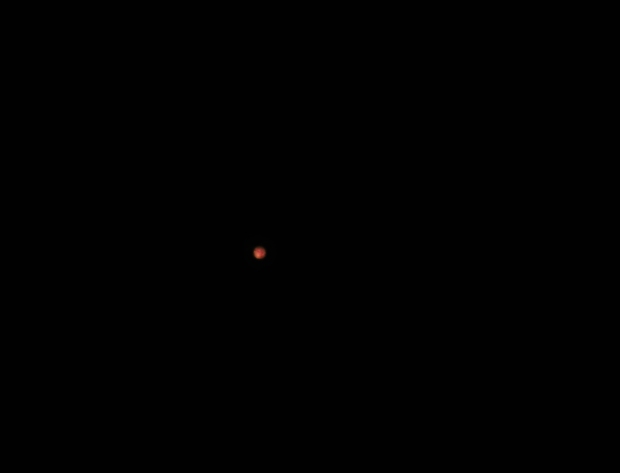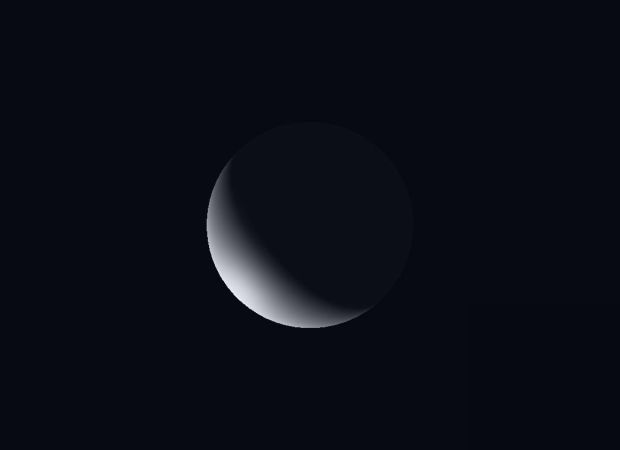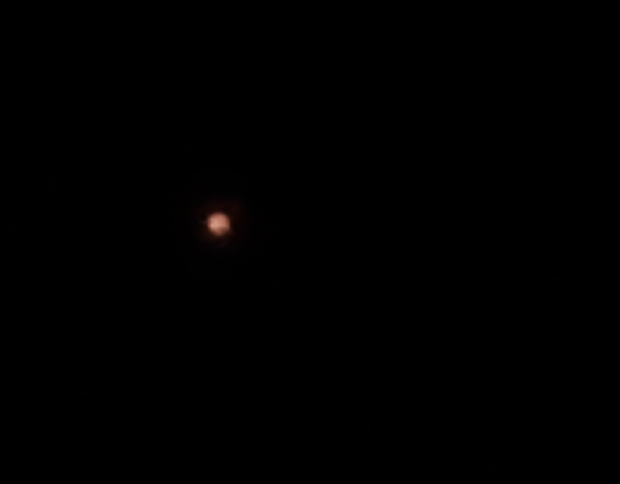
One of my better shots of Mars. It is close to us, but is currently moving away and is is the second smallest planet. Smaller than Earth or Venus by far, so that makes it tough to get a good image.

One of my better shots of Mars. It is close to us, but is currently moving away and is is the second smallest planet. Smaller than Earth or Venus by far, so that makes it tough to get a good image.
I got my best image of Saturn to date. It was so good that I have developed a man-crush for the giant ringed sentinel. Jupiter and Saturn act as guardians of the interior planets. Without their amazing gravitational power, we may not be in a perfect orbit to promote life. They also absorb and deflect/fling many asteroids and comets away, negating many of the threats that may have easily affected us (in a bad way). So, I am writing a short post devoted the Saturn’s awesomeness and it’s rings. There are many other amazing facts for you to find (like it’s famous hexagon storm engulfing it’s entire north pole), so if this interests you there is tons of other sites and sources waiting to be read. Enjoy!
————————————–
Saturn is one of the most astounding and siren objects we can see in space. Even better, it is visible to the naked eye, and with a little work, you can see it’s impossible rings.
You see, the thing about the rings that makes it so amazing is that the theories of the ring’s creation are wildly different. Have they been there since the dawn of our solar system? Did it form around and along with Saturn? Or did a collision happen very recently, perhaps with some of it’s moons or moonlets (glorified rocks locked in orbit). Perhaps even an asteroid or comet?
Some of the rings are known to be fed by some of it’s moons. Enceladus is a bill of frozen ice with a rocky, molten core. Most moons don’t have a molten core like the rocky planets do. It is usually caused by large amounts of mass and the pressure they create, but this moon (an others around other planets, mostly the gas giants) has a different mechanism. It is pushed and pulled by the moons it orbits near and the massive gravity of Saturn. It physically changes shape under the pull of the various sources of strong gravity, and this stretches and crushes it like a ball of dough. Yet at this level of mass, it causes enough friction and pressure to heat the core to extreme temperatures. Since Enceladus’s shape is constantly changed, the ice cracks and leaves fissures. If the fissures are deep enough, like ones viewed on it’s south pole, it reaches deep enough to expose water which was thawed by this entire process. It spews out of the cracks and into space. It is caught by Saturn and was recently discovered to be a main contributed to the ring system.
The largest moon, Titan, is even more interesting. It is very large and also has a molten core. It also has a thick orange atmosphere that blocks several surface lakes/seas of liquid methane. In 2010 a cryo-volcano (or ice volcano) was discovered on the surface. It is identical to regular volcanos but spews freezing methane and other ices. This also contributes to the rings.
It appears the rings have always been there, heavily influenced by it’s 60 known moons (it was something like 30 moons when i was in grade school!). Or, like human skin, always looks identical yet is constantly renewing the dust, ice and rocks in which make it up. Who knows though?
Lastly, a couple of facts to blow your mind. Saturn’s rings are largely invisible. Beyond the visible rings is another ring, several times more massive than what you see. It is so thinly comprised that you wouldn’t notice it, even if you were standing within it. This is similar to the rings of Jupiter. Yes, Jupiter has rings. You would need special instruments to view them.
Also, the (visible) rings are around 175,000 miles wide, yet from top to bottom they are razor thin. To help you envision how thin they are, imagine a yard or meter stick somehow bent into a perfect circle. Now imagine that this circular yard stick is 10,000 times thinner than a razor. At that size, the stick would be hardly visible, if at all. NASA states that the rings are as little as 30 feet wide in some areas, and no more than 300 feet wide in others. Yet if you could drive a car on top of them, it would take weeks to drive from the inner ring to the outer ring. It would take under a second in some cases to drive from the top to the bottom, though. Cool, right!?
Saturn is also much farther from Earth than we might think. It is easily bright enough to spot as an orangish/yellow dot, yet it’s rings are visible through decent binoculars. This is amazing when to consider that you could fit the orbits of all the planets from Mercury to Jupiter in between the gap that lies between Jupiter and Saturn. This means it is twice the distance from the Sun than Jupiter is. Interestingly enough, Uranus is twice the distance from the Sun as Saturn. The rocky interior planets (Mercury, Venus, Earth, Mars and the outlying asteroid belt with dwarf planet/asteroid Ceres and Vesta within in) are packed together way tighter than the gas giants.
When you view Saturn, it is anywhere from 9 to 10 times the distance Earth lies from the Sun. This is anywhere from 1.4-1.5 million km.
It makes the picture I took that much more precious to me. Everything I have described is multiplied by several magnitudes when you realize that all of these amazing attributes have been reduced to a few handfuls of pixels in my camera. The light I captured lft Saturn two hours before I aimed the viewfinder at it. Essentially, I was looking back in time. Saturn had left this spot 120 minutes beforehand and in reality was actually a few degrees to my west/right.
I could go on forever, but won’t. The universe is so amazing.
(A closer look):

Mars is close enough to see some surface features, even through an alright camera with no telescope. It depends which side is facing us but usually something is pretty visible.
Opposition is in 4 days, meaning it will then be above the horizon in the east as the Sun touches the horizon in the west. Also meaning we will be smack in the middle between Mars and the Sun. Good position to view it in. It will basically be at it’s closest point to Earth (for this year at least) and will be visible from sunset to sunrise, almost.
Comet ISON really had me going. While I did get a photo and got to see it through binoculars, it fizzled. ISON brightened with immense power once is got within the glare of the sun, and came out the other side as a specter. A short time ago, I saw a few shooting stars as we passed through ISON’s previous path.. so there’s a 90% chance those came from ISON itself, however, the whole experience was underwhelming.
Well, Comet Siding Springs does not have lofty predictions to live up to, and it’s confirmed 20,000 mile distant buzzing of Mars in October 2014 make it, in ways, better than ISON ended up being.
It may never make it to naked eye brightness for most of the world (light pollution). These unfixed objects can be hard to find in a relatively unchanging sky. However, at an estimated +7 magnitude, it will be weel within range of binoculars and, most definitely, a small telescope and camera object. For those not into doing all that, I have parting words:
It will be really damn easy to see and find. In mid-October it will pass right in front of Mars, just to the right/west of Sagittarius and the brightest section of the Milky Way (meaning, it will be to the right of the bright, galactic core of our galaxy).
If you happen to go out around the 19th of October (2014), find Mars. Grab a telescope, camera or binoculars. What you see will not be an optical illusion (for once). Mars will be WITHIN the coma (the gaseous atmosphere of a comet) of Comet Siding Springs. For those not into the night sky/astronomy, you will probably be peppered with videos taken by various Mars rovers and satellites. This comet will be ten times closer to Mars than the Moon is to Earth. Not only will you see extreme close-ups of this comet, you will also most likely see video/photos of massive meteor showers (possibly meteor storms).
The story line and location will make it an easy find with a very amazing backstory. It still has a 1 in 100,000 chance of hitting Mars. While that seems out of the question, having a comet’s coma enveloping Mars will be breathtaking and interesting.

Venus, like most objects, gets dimmer as it retreats from Earth. This is happening currently, however, Venus is still very, very close to us (relatively speaking). It can get as close as (slightly over) 30 million miles and as far as nearly 2 Astronomical Units (AU’s) (1 AU is the roughly 90 million mile distance that lies between Earth and the Sun). So, Venus has hit it’s closest point to Earth (a third of an AU) and will quickly get further and further.
So, why get up early (pre-dawn) to see it if it’s retreating? Well, at it’s closest (since it’s between us and the Sun) it is only visible as a slim crescent. To the naked eye it looks like a bright, brilliant point of light. Binoculars or even an okay camera will reveal it’s true shape: almost nothing.
As it drifts further away in space, it begins to show a much larger crescent. So, even as it gets further away, it is at it’s best point in orbit for Earth-based viewers. It will shine brighter than it did a couple months back when it was closer and still an evening-sunset-sky object.
So check it out! I know I will. If you have a camera with a 15-30+ optical zoom, you will get some nice shots. Tonight (technically, tomorrow morning) Venus will be crossing the horizon at about 3:30am. At 4:30 it will be well-above the horizon right next to Sagittarius. This is towards the galactic center with loads of distance galaxy spiral arms, star clusters and nebulae. Great photo chance.
Side note: Venus is the end of a planet parade that starts and sundown. Jupiter shines high in the northeastern sky before the sun is even completely down. It shines at a -2.1 mag object (rivaling the brightest start Sirius). After midnight comes Mars shining bright in Virgo (south) at a 0.1 mag. Shortly after, Saturn rises in Scutum at a magnitude 0.69. Venus rises shortly after. You could draw a straight line from Jupiter through Mars, Saturn, to Venus.
Second side note: The Moon will be side to side with Jupiter tonight. Another photo opp, albeit for the skilled, patient photographer.
Photo Below: Venus location and information at 4:30am for southern USA latitudes.
Photo below: 4:30am location and information for Saturn, which is to the left of Mars. Saturn will be slightly dimmer than Mars, but both will be bright and visible. Mars will appear bright and nearly red, so use the planet as a starting point of the constellations aren’t familiar.


Probably forged through billion of years of harsh cold and glaciers carving what appears to look like Mars was twisted at the poles.
Interestingly, the most interesting feature is at the bottom. It looks like some carbon-rich burned out crater, but no one is actually sure. It could be a number of cool things.


So, 2% of soil on Mars is water and there’s mass evidence of oceans, lakes and rivers. In valleys and canyons where water once rampaged, mist pops up during the Mars mornings at some times of the Martian year. Beautiful and amazing.
Lithopanspermia: It means spreading life, preserved within chunks of Earth rock (ejecta) with some form of life held inside, ejected into space by meteorite collisions and other nasty things. Panspermia is the same thing, but on a universal scale (the concept of life beginning somewhere and being spread by collisions and other mechanisms elsewhere).
This is something we will start hearing more and more about. It is becoming very, very obvious that life at the largest and smallest of scales have unmistakable similarities. Life on Earth, such as plants, grow in one location and undergo a process that ensures it’s seeds will be cast off and spread elsewhere.
Panspermia is the exact same thing, but on a universal scale. Imagine planets as seeds. Not all seeds grow, however, the ones that succeed and sprout life act as flowers. Some basic lifeforms like certain bacteria can survive open space (especially held within a solid rock) and essentially seed life on other moons and planets. Not all will grow life elsewhere because it depends on their conditions, but a select few will.
Earth, specifically, has recently been discovered to have a large amount of it’s ejecta sent towards Mars (way more than previously believed). Mars also sends a lot of it’s ejecta to Earth. However, the speed of the asteroid or meteorite hitting Earth determines how fast and far it goes. Some of the quicker ejecta have been found to make it to Jupiter and it’s moons. Amazingly, in some cases, the projectiles have the energy to leave or solar systems.
This means life on Earth could have spread on Mars, the oceans that churn under all the ice on Europa, or even another nearby star system. Or, life could have ejected from one of these places, or even another solar system, and seeded life on Earth.
How neat is that?